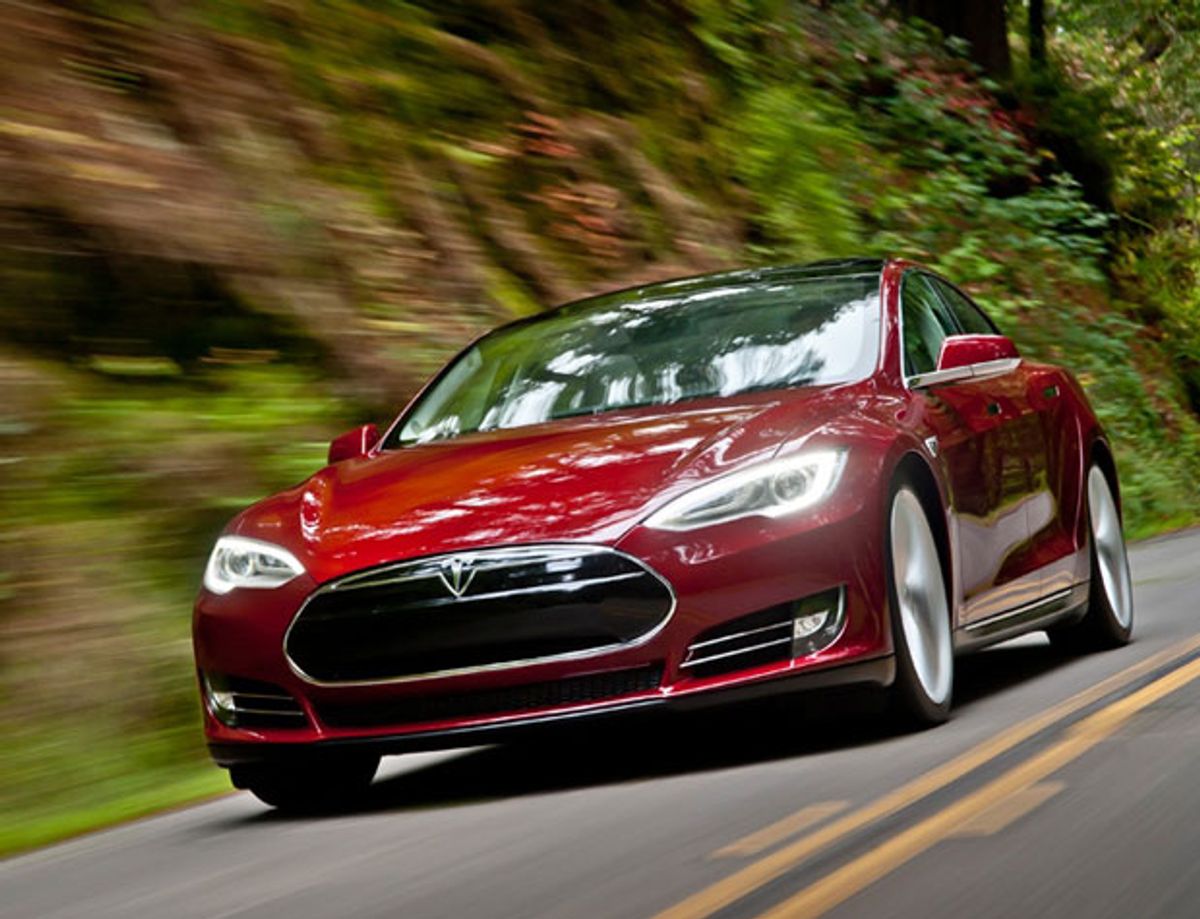So I have a little sympathy for Broder, behind the wheel of a car he’d never before driven, though he was in phone communication with Tesla staffers (like my daughter had been with me). And I also can sympathize with Musk and the Tesla support staff, who, now that they are used to driving electric cars, may have forgotten the anxiety of being in an unfamiliar car.
The Elon Musk/New York Times debate did offer a few lessons about how to drive an electric car to maximize range. (Though, for most of us, if or when we drive electric, we’ll probably have to test the limits for ourselves; haven’t we all pushed the limits on our gas engine cars on occasion?) Here’s my takeaway:
In cold weather, put on a sweater. Broder says he turned the heat down, Musk said the car’s sensors showed that Broder turned it up. The point is that using the heater does draw power that could extend range, so if you’re going for a distance record in winter weather, warm yourself with an extra sweater, not the car's heater.
You leave your cell phone plugged in overnight, so why not your car? Much of the trouble Broder had stemmed from the fact that the available charge on the car dropped overnight, due to cold weather. While there’s been a lot of debate over just how badly cold weather affects electric car batteries, it seems to be a problem that’s easy to prevent. Park near an outlet and plug in.
Fill ‘er up. Broder, it seems, pulled the equivalent of a teenager with a nearly empty wallet, trying to limp home while spending the least amount of money possible (“Uh, I’ll just be getting $10 worth.”) If you’re planning to drive an electric car a serious distance, and you’re at a charging station, don’t be in such a hurry, the time you spend then will be time you save later, yadda yadda.
An electric car’s battery is like your mom, it doesn't want you speeding or driving recklessly. Behave yourself; you’ll go further and look at what you'll save in speeding tickets.
The laws of physics apply. That is, as wonderful a technology as regenerative braking is, it cannot produce more energy than it uses. Stop-and-go city driving is still a minus, not a plus (did you really think otherwise, Mr. Broder?)
Some of these lessons seem like common sense, others perhaps are less obvious to new drivers. But not being a new (or old) Tesla driver myself, I asked a neighbor, whose new Tesla I've seen parked on my block, to weigh in. Eric Verwillow, a senior engineer at a major networking equipment company, took delivery of his Model S in December. He doesn’t have a lot of sympathy for Broder:
“It doesn't take much to be smarter than NYT reporter John Broder,” Verwillow told me. “All you have to do is let the batteries charge when you plug in and don't start a 60-mile drive with 30 miles of range remaining.” He's not alone. CNN took up Tesla's offer to other journalists to drive the same route, and had none of Broder's difficulties, though still a bit of his range anxiety.
But, in general, Verwillow thought that all this noise about maximizing range was beside the point. “Maybe it's a necessary part of your driver education to find a style of driving that you're comfortable with, and to understand what mileage/range you'll get as a result [of driving that way] but if you let range dominate your driving, you're no longer a good driver.”
For Verwillow himself, worrying about range seems silly. “Except for maybe a couple of times per year, I drive less than 100 miles in a day, usually much less,” he says. “My daily commute is about 10 miles each way. As long as I'll have access to an electric outlet at the end of the day, I can drive like a maniac for those miles and all I'm doing is spending a little more money on electricity to pay for my inefficiency.”
It's good to know I have a neighbor who enjoys driving like a maniac.
Anyway, the kerfuffle between Broder and the Times now seems to have wrapped up, with New York Times Public Editor Margaret Sullivan weighing in Sunday with the possible last word, essentially, that Broder took the test drive in good faith but used bad judgment. And that Tesla might have provided a little more guidance to a novice driver.
Follow me on Twitter @TeklaPerry.
Tekla S. Perry is a senior editor at IEEE Spectrum. Based in Palo Alto, Calif., she's been covering the people, companies, and technology that make Silicon Valley a special place for more than 40 years. An IEEE member, she holds a bachelor's degree in journalism from Michigan State University.




